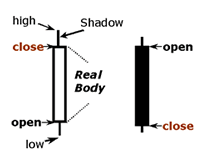History of Japanese Candlestick Charting

From the Japanese era of 1500 to 1600 the country was constantly in military conflict, as the overlords of that time battled to gain control of the countries provinces. This era is known as “Sengoku Jidai” meaning “Age of Country at War.” The Japanese experiencing centuries of war is the theory behind candlestick charting, as every aspect of trading requires the same strategic skills as waging warfare. These skills include strategic planning, strategic withdrawals, human psychology, competition, and even luck.
By the early 1600’s Japan had become a unified country where business and trading began to thrive. As national trade began to replace local trade, the city of Osaka and its easy access to the sea became the nation’s capital. With Osaka being Japan’s gateway to commerce, and having a vast storage of supplies it was given the name of “the Kitchen of Japan.”
Japan at that time was comprised of four social classes from rich to poor; the shi (soldiers or dukes), the nong (peasant farmers), the gong (artisans or skilled laborer), and the shang (merchant and traders). The merchants were viewed as being among the lowest class of the social hierarchy, as they did not produce anything, only profiting from sales of goods. But, by the 1700’s the merchant class began accumulating wealth and breaking down social hierarchy. Some merchants became so wealthy the government began to severely punish them by confiscated their wealth, having their children executed, and the merchant being exiled.
The merchants would lead the Japanese rice markets by setting its price and establishing the Dojima Rice Exchange in Osaka. The merchants would also give birth to the first futures contract ever traded. “Up until 1710, the Exchange dealt in actual price. After 1710, the Rice Exchange began to issue and accept rice warehouse receipts. These warehouse receipts were called rice coupons. These rice receipts became the first futures contracts ever traded.” (Nison, Steve. Japanese Candlestick Charting Techniques: New York: New York Institute of Finance, 2001. Print)
Enter Munehisa Homma born in 1724 to a prominent wealthy family. The Homma’s where something of a Rothchild of their time. After the death of Munehisa’s father, he was given control of the family’s fortune comprised of a large rice farming estate. Munehisa would take the family’s fortune, and trade futures on the Dojima Rice Exchange in Osaka. Munehisa would begin to use information on the rice markets to have advantage over the competition. He would keep record of weather conditions year over year, he would analyze and record past rice price action to learn about the market psychology of investors. This insight allowed Munehisa to accumulate a large fortune, and become a financial consultant to the Japanese government. Munehisa also received the honored title of a samurai. His trading concepts eventually evolved into chandlestick methodology, and to what we now know today as Japanese candlestick charting.
The Japanese style of candlestick charting has been used by the Japanese for almost 400 years. This unique style of charting has given the Japanese an edge in predicting market price action. Japanese candlestick were almost unknown to Western society until they became more popularized sometime in the 1980’s.
“There is nothing so disastrous as a rational investment policy in a irrational world.” –John Maynard Keynes
Reference: (Nison, Steve. Japanese Candlestick Charting Techniques: New York: New York Institute of Finance, 2001. Print)
your post is very interesting, I like your post, because it can add insight for me, hopefully the future can provide better posts again, so that I can know many things in my life, thank you..😉😊
Candlesticks have become the foundation to my trading philosophy, it helps drive out all the noise. I would suggest to anybody interesting in candlestick charting to read Steve Nison’s book Japanese Candlestick Charting Techniques. There is a free PDF version online! I’m glad you like my post. Happy New YEAR!!
I do not understand English but your publication looks interesting, I'm still a friend.